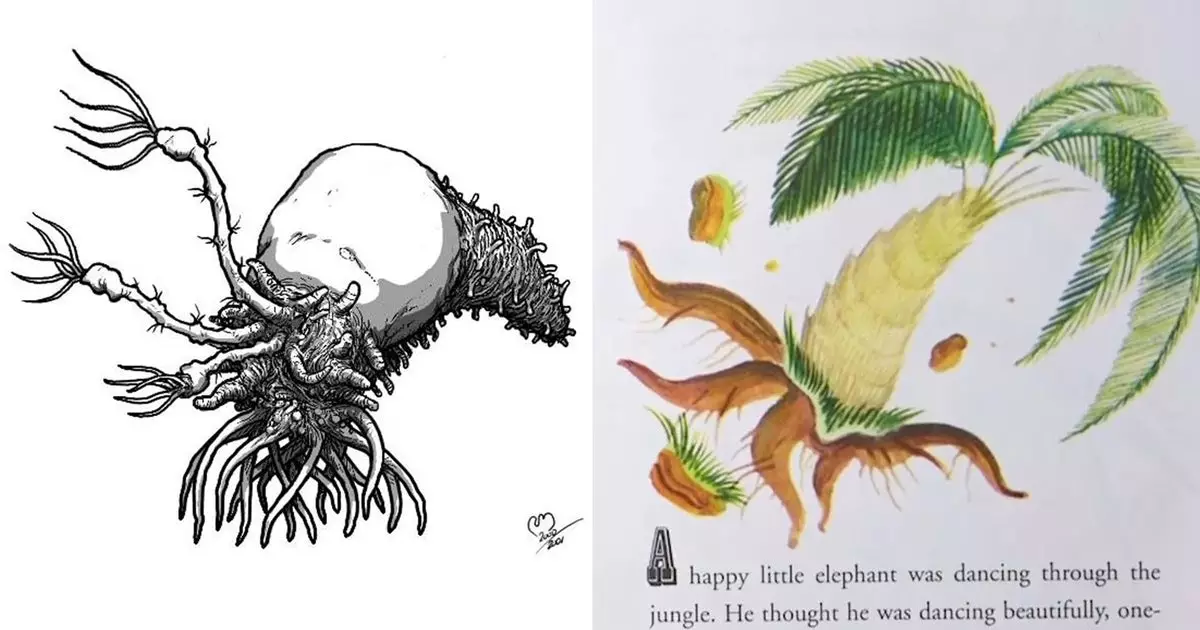The 20th anniversary of *Halo 2* recently prompted reflections on the game’s development and the industry hurdles faced by its creators. As modern gaming communities celebrated the legacy of this iconic title with tributes to its multiplayer maps and moments of nostalgia, the behind-the-scenes stories have resurfaced, revealing both the triumphs and tribulations that characterized its creation. The insights shared by the original design team illustrate the intricate balance of creativity and hardship that defined the project, shedding light on broader issues that still plague the gaming industry.
One of the most surprising revelations from the anniversary discussions involved the inspiration behind one of the game’s most terrifying adversaries, The Flood. The creature design was partially drawn from a children’s book, *The Saggy Baggy Elephant*, a seemingly innocuous reference that belies the horror embedded in game design. Designers Lorraine and Robert McLees—a husband and wife duo—recalled how, despite working within a smaller development team, their work required flexibility and adaptability that transcended their outlined roles.
Robert, who primarily worked on weapon design, was tasked with conceptualizing The Flood, which led to an unexpected artistic journey. The discussions around the designs reveal not only the uniqueness of the creature’s appearance but also the authenticity of emotional investment that artists bring to their work. The process of arriving at the Infection Form underwent several iterations, each shaped by Robert’s childhood memories and artistic influences. It was this duality of joyful remembrance and intense creativity that allowed sinister forms to emerge from the collective subconscious.
While the whimsical inspiration behind creature design is captivating, the process of creating *Halo 2* was not without consequence. The term “crunch” has become synonymous with the gaming industry, characterizing periods of excessive work hours that often lead to burnout among developers. The McLees shared candidly about the grueling conditions that Bungie employees faced leading up to the game’s release. Robert highlighted, “The crunch on Halo 2 was more than just stressful; it pushed the limits of what we thought we could endure as a team.”
As one leads into the other, the joy of seeing creative visions materialize stands in stark contrast to the emotional strain created from prolonged work months, leading to a serious inquiry into workplace management and creative sustainability. The systemic issues that plagued Bungie during the period of *Halo 2’s* inception continue to echo in modern gaming studios, urging a reevaluation of how developers are managed and supported.
The interview highlighted the pressures inherent within the development environment at Bungie. Lorraine described the uncertainty of their career at that time, remarking that it was “the make-it-or-break-it period for the young Bungie crew.” The emotional impact that such high-stakes situations have on employees can be debilitating. The work environment was likened to an overwhelmed system where creative minds were essentially forced to wear multiple hats simultaneously, leading to fatigue and burnout.
This period of extreme pressure fostered a culture where creativity sometimes flourished against overwhelming odds but also risked the mental health of everyone involved. Their insights capture the delicate balance between ambition and well-being in the gaming industry—one that requires introspection not just within a single organization like Bungie, but across the industry as a whole.
As the gaming community continues to reverberate with the legacy of *Halo 2*, it also faces ongoing challenges regarding the treatment of creators. The stories revealed by the McLees serve as critical reminders of the human element behind video games—the dreams, struggles, and realities faced by those who breathe life into virtual worlds.
In the wake of modern challenges, from mandatory seven-day workweeks in some studios to ongoing discussions about labor rights within the industry, it becomes increasingly essential to address these systemic issues. The balance of creativity should not come at the expense of personal well-being. As developers continue to shape the future of gaming, the lessons learned from the past decades must be taken to heart—to foster environments where creativity can thrive without sacrificing the people who produce it.
In the end, *Halo 2* stands not just as a testament to gaming excellence but as a poignant reflection on the evolving landscape of game development. A delicate dance between artistry and the rigors of production, its legacy is one that calls for both celebration and contemplation.

